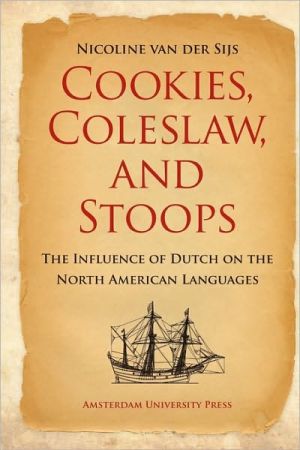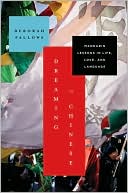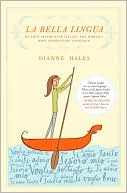Cookies, Coleslaw, And Stoops
From Santa Claus (after the Dutch folklore saint Sinterklaas) and his sleigh (the pronunciation of the Dutch slee is almost identical) to a dumbhead talking poppycock, the contributions of the Dutch language to American English are indelibly embedded to some of our most vernacular terms and expressions. In Cookies, Coleslaw and Stoops, the renowned linguist Nicoline van der Sijs glosses over 300 Dutch loan words like these that travelled to the New World on board the Henry Hudson’s ship the...
Search in google:
From Santa Claus (after the Dutch folklore saint Sinterklaas) and his sleigh (the pronunciation of the Dutch slee is almost identical) to a dumbhead talking poppycock, the contributions of the Dutch language to American English are indelibly embedded to some of our most vernacular terms and expressions. In Cookies, Coleslaw and Stoops, the renowned linguist Nicoline van der Sijs glosses over 300 Dutch loan words like these that travelled to the New World on board the Henry Hudson’s ship the Halve Maan, which dropped anchor in Manhattan more than 400 years ago. Lively and accessible, the information presented in this volume charts the journey of these words into the American territory and languages, from more obscure uses which maybe have survived in only regional dialects to such ubiquitous contributions to our language like Yankee, cookie, and dope. Each entry marks the original arrival of its term into American English and adds up-do-date information on its evolving meaning, etymology, and regional spread. Not to be missed by anyone with a passion for the history behind our everyday expressions, this charming volume is the perfect gift for the linguistic adventurer in us all.
Foreword by the Minister of Education, Culture and Science 5Preface 111 The Dutch language in North America 171.0 "The last real speaker of the dialect" 181.1 Dutch colonists and Native Americans 201.2 The Dutch language on the American East Coast: Low Dutch 271.3 Dutch place-names from the seventeenth century 511.4 Dutch and double Dutch 561.5 The American Dutch, American Flemish and American Frisian of nineteenth- and twentieth-century immigrants 611.6 Dutch place-names from the nineteenth and twentieth century 1001.7 The Dutch language and culture in the US, anno 2009 1072 Dutch words that have left their mark on American English: a thematic glossary 1132.0 Introduction: sources and structure of the glossary 1142.1 Food, drink, and stimulants 1172.2 Flora and fauna 1442.3 Household effects and everyday implements 1672.4 Polity and citizens 1802.5 The American landscape 2012.6 Human traits and characterizations 2122.7 Religion and religious festivals 2192.8 In and around the house 2262.9 Trade 2322.10 Money and units of measure 2372.11 Children's language 2422.12 Transport by sea and land 2562.13 Clothing 2642.14 Miscellaneous 2702.15 Dutch loanwords that did not originate from immigrants 2762.16 Conclusion 2803 Dutch influence on North American Indian languages 2833.0 Introduction 2843.1 Delaware Jargon 2843.2 Amerindian languages that were spoken on the East Coast in the seventeenth century 2863.3 Thematic overview of Dutch loanwords 2893.4 Alphabetical survey of Dutch loanwords 2933.5 Conclusion 296Bibliography 299List of illustrations 311Index to the AmericanEnglish words in chapter 2 317








